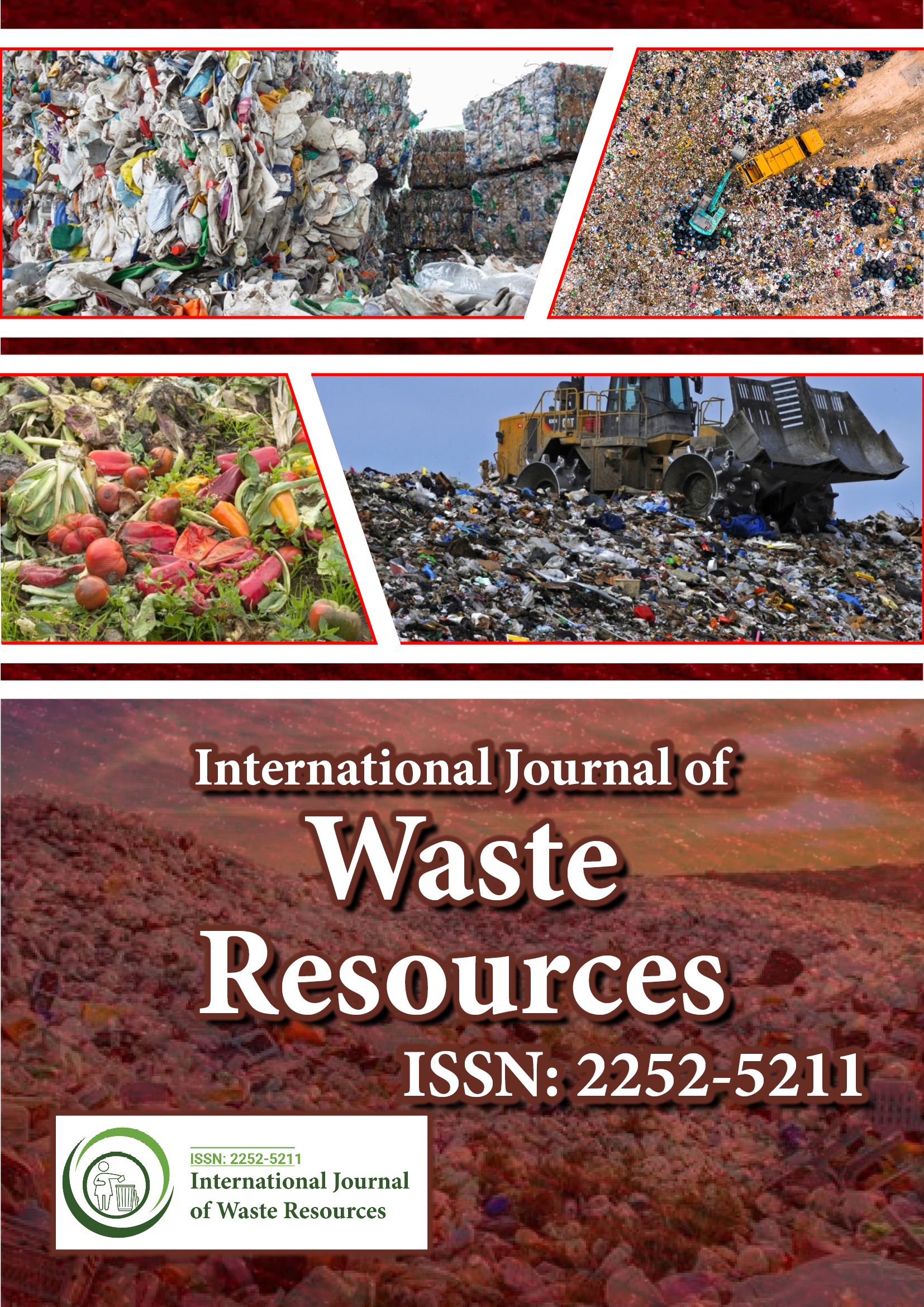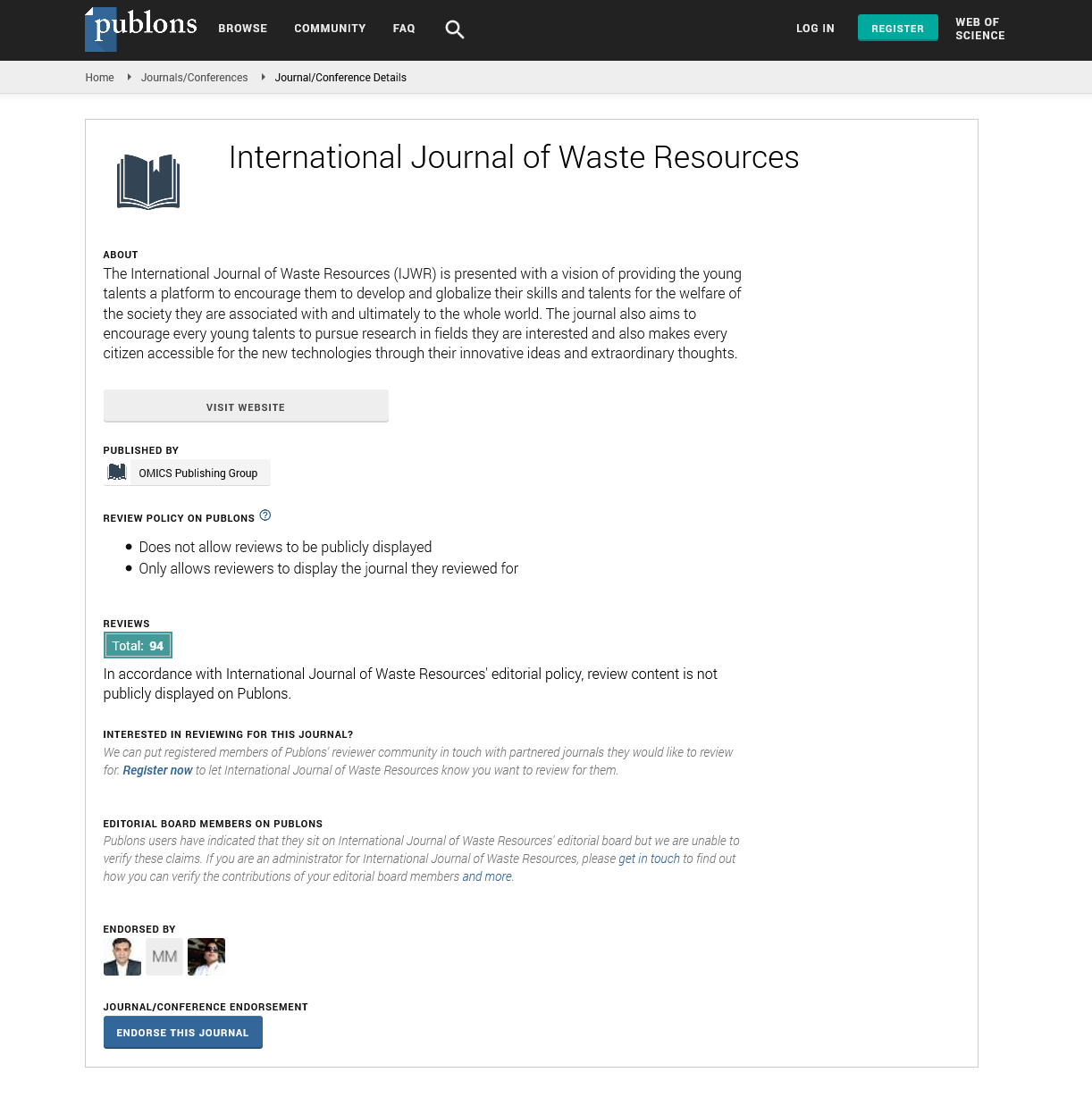Indexed In
- Open J Gate
- The Global Impact Factor (GIF)
- Open Archive Initiative
- VieSearch
- International Society of Universal Research in Sciences
- China National Knowledge Infrastructure (CNKI)
- CiteFactor
- Scimago
- Ulrich's Periodicals Directory
- Electronic Journals Library
- RefSeek
- Directory of Research Journal Indexing (DRJI)
- Hamdard University
- EBSCO A-Z
- Publons
- Google Scholar
Useful Links
Share This Page
Journal Flyer

Open Access Journals
- Agri and Aquaculture
- Biochemistry
- Bioinformatics & Systems Biology
- Business & Management
- Chemistry
- Clinical Sciences
- Engineering
- Food & Nutrition
- General Science
- Genetics & Molecular Biology
- Immunology & Microbiology
- Medical Sciences
- Neuroscience & Psychology
- Nursing & Health Care
- Pharmaceutical Sciences
Commentary - (2022) Volume 12, Issue 1
Recycle and Disposal of Fluorescent Lamps
Paul Harrison*Received: 04-Jan-2022, Manuscript No. IJWR-22-450; Editor assigned: 06-Jan-2022, Pre QC No. IJWR-22-450(PQ); Reviewed: 20-Jan-2022, QC No. IJWR-22-450; Revised: 24-Jan-2022, Manuscript No. IJWR-22-450(R); Published: 31-Jan-2022, DOI: 10.35248/2252-5211.22.12.450
Description
Fluorescent lights and tubes are considered as dangerous waste because they contain some harmful metals that include:
• Fluorescent lights and tubes;
• Fluorescent tubes, including low mercury tubes;
• Compact fluorescents, including low mercury lights;
• High Intensity Discharge (HID) Lamps;
• Metal halide lights, similar as floodlights for large inner and out-of-door areas and gyms;
• Sodium lamps, similar as those occasionally used as security lighting and out-of-door floodlights;
• Mercury vapor lights, similar as those occasionally used for road lighting.
These lights and tubes must be reclaimed, or taken to a dangerous waste disposal unit, junk yard, or an authorized recycling installation, mercury containing lights or tubes are thrown in garbage and collected for disposal, mercury is released to ground when these lights are broken. Mercury vapors from broken lights or tubes can be absorbed through the lungs into the bloodstream. People who are particularly close to the breakage are especially at threat. Mercury from broken lights and tubes can also be washed by rain water into aqueducts.
Safety measurements are taken to these lights while transporting. Lights and tubes should not be wrapped together. Lights and tubes are stored in a packed box, or another self-protective vessel. Store them in an area down from rain so that if they break, the mercury from broken lights or tubes won't be washed by rain water into aqueducts.
Roughly 370 pounds of mercury were released in California in the time 2000 due to the breakage of electric lights and tubes during storehouse and transportation. It's estimated that nearly 75 million waste fluorescent lights and tubes are generated annually in California. These lights and tubes contain further than a half a ton of mercury. The mercury in civic storm water deposition results in part from inaptly discarded fluorescent lights and tubes.
Dangerous waste regulations designate an order of dangerous wastes called "Universal Waste." This order includes numerous particulars, fluorescent lights, fluorescent tubes, batteries, cathode shaft tubes, instruments that contain mercury, and others. Not all universal wastes are subject to the same regulations or disposal conditions. In general, universal waste may not be discarded in solid waste tips.
Under California's Universal Waste Rule, homes and conditionally exempt small amount generators were allowed to dispose fluorescent lights and tubes, batteries (not lead/acid batteries of the type used in motors), mercury thermostats, and electronic bias to the trash. Original trash companies or other agencies were allowed to ban these particulars from the trash any time. Large and small volume instructors are needed to transport their universal waste to another handler, a universal waste transfer station, a recycling installation, or a disposal facility. Under the California's Universal Waste Rule, specified waste creators were permitted to ship specified universal wastes to tips, but this disposal allowance has expired.
Fluorescent lights and tubes are an energy-effective preference to incandescent lights for the following reasons:
• Three to four times further energy-effective;
• Cost less to use;
• Reduce hot house gas emigrations and other pollution from energy product;
• Last up to ten times longer than standard incandescent light bulbs;
• What to Look For When Buying Fluorescent Lights and Tube;
• Energy effectiveness, lumens per watt;
• Long beacon life-minimum of hours rated life;
• Smallest mercury content;
• Manufacturers or merchandisers that promote or help with recycling;
• Homes or Small Amounts of Breakage.
In a household or for small volume breakages, usage of standard vacuum cleaner, ordinary domestic, marketable bottom vacuums makes the risk factor low, instead of vacuuming, wear latex gloves and precisely clean up the fractions. Wipe the area with a damp disposable paper kerchief to remove all glass fractions and associated mercury. Keep all people and faves down from area so that mercury- containing pieces and greasepaint aren't tracked into other areas. Keep the area well voiced to disperse any vapor than may escape. After cleaning process completes, place all fractions along with cleaning accoutrements into a sealable plastic bag.
For accidental breakage of larger figures of lights vacuum cleaner is safe to collect the broken particles. Vent area where breakage occurred. Separate all unbroken lights and cleanup breakages with a technical mercury vacuum cleaner or other suitable cleaner that avoids dust and mercury vapor generation. Place materials in closed containers. Reclaim waste along with complete lights.
Citation: Harrison P (2022) Recycle and Disposal of Fluorescent Lamps. Int J Waste Resour. 12:450
Copyright: © 2022 Harrison P. This is an open-access article distributed under the terms of the Creative Commons Attribution License, which permits unrestricted use, distribution, and reproduction in any medium, provided the original author and source are credited.

